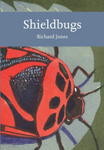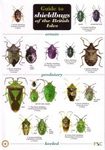About this book
The Superfamily Pentatomoidea (stink bugs and their relatives) is comprised of 18 families with over 8,000 species, the largest of which is the family Pentatomidae (about 5,000 species). These species primarily are phytophagous, and many cause tremendous economic damage to crops worldwide.
Within this superfamily are six invasive species, two that occur worldwide and four that are recent invaders in North America. Once established in new geographic regions, these species have increased their numbers and geographic distributions dramatically, causing economic damage totaling billions of dollars. Invasive Stink Bugs and Related Species (Pentatomoidea): Biology, Higher Systematics, Semiochemistry, and Management is the first book that presents comprehensive coverage of the biology of invasive pentatomoids and related true bug species and addresses issues of rapidly growing economic and environmental concerns.
Containing the contributions of more than 60 stink bug specialists from 15 countries, Invasive Stink Bugs and Related Species (Pentatomoidea) provides a better understanding of the biology and economic importance of these invasive species, why they became invasive, and how their continued geographical expansion is likely to affect numerous agricultural systems and natural environments. Including over 3,500 references, this authoritative work serves as an access point to the primary literature on their life histories, higher systematics, diapause and seasonal cycles, pathogens, symbionts, semiochemistry, and pest management control strategies for pentatomoid bugs.
Contents
INTRODUCTION
Introduction to the Superfamily Pentatomoidea
J. E. McPherson, C. Scott Bundy, and A. G. Wheeler, Jr.
SYSTEMATICS
Higher Systematics of the Pentatomoidea
David A. Rider, Cristiano F. Schwertner, Jitka Vilímová, Dávid Rédei, Petr Kment, and Donald B. Thomas
INVASIVE PENTATOMOIDEA
Bagrada hilaris (Burmeister)
C. Scott Bundy, Thomas M. Perring, Darcy A. Reed, John C. Palumbo, Tessa R. Grasswitz, and Walker A. Jones
Halyomorpha halys (Stål)
George C. Hamilton, Jeong Joon Ahn, Wenjun Bu, Tracy C. Leskey, Anne L. Nielsen, Yong-Lak Park, Wolfgang Rabitsch, and Kim A. Hoelmer
Megacopta cribraria (F.)
J. E. Eger, W. A. Gardner, J. K. Greene, T. M. Jenkins, P. M. Roberts, and D. R. Suiter
Murgantia histrionica (Hahn)
J. E. McPherson, C. Scott Bundy, and Thomas P. Kuhar
Nezara viridula (L.)
Jesus F. Esquivel, Dmitry L. Musolin, Walker A. Jones, Wolfgang Rabitsch, Jeremy K. Greene, Michael D. Toews, Cristiano F. Schwertner, Jocélia Grazia, and Robert M. McPherson
Piezodorus guildinii (Westwood)
C. Scott Bundy, Jesus F. Esquivel, Antônio R. Panizzi, J. E. Eger, Jeffrey A. Davis, and Walker A. Jones
POTENTIALLY INVASIVE PENTATOMOIDEA
Oebalus spp. and Arvelius albopunctatus (De Geer)
J. E. McPherson and C. Scott Bundy
A NONINVASIVE GROUP (ANTESTIA COMPLEX)
The Antestia Bug Complex in Africa and Asia
Régis Babin, Pierre Mbondji Mbondji, Esayas Mendesil, Harrison M. Mugo, Joon-Ho Lee, Mario Serracin, N. D. T. M. Rukazambuga, and Thomas A. Miller
DIAPAUSE AND SEASONAL CYCLES OF PENTATOMOIDEA
Diapause in Pentatomoidea
Dmitry L. Musolin and Aida Kh. Saulich
Seasonal Cycles of Pentatomoidea
Aida Kh. Saulich and Dmitry L. Musolin
VECTORS OF PLANT PATHOGENS
Pentatomoids as Vectors of Plant Pathogens
Paula Levin Mitchell, Adam R. Zeilinger, Enrique Gino Medrano, and Jesus F. Esquivel
SYMBIOTIC MICROORGANISMS
Symbiotic Microorganisms Associated with Pentatomoidea
Yoshitomo Kikuchi, Simone Prado, and Tracie Jenkins
SEMIOCHEMISTRY
Semiochemistry of Pentatomoidea
Donald C. Weber, Ashot Khrimian, Maria C. Blassioli-Moraes, and Jocelyn G. Millar
MANAGEMENT
General Insect Management
Jeremy K. Greene, Eric P. Benson, James A. Baum, C. Scott Bundy, Walker A. Jones, George G. Kennedy, J. E. McPherson, Fred R. Musser, Francis P. F. Reay-Jones, Michael D. Toews, and James F. Walgenbach
Indexes
Customer Reviews
Biography
J. E. McPherson is Professor Emeritus of Zoology in the Department of Zoology at Southern Illinois University, Carbondale, USA.


















![Faune de France, Volume 77: Hémiptères Saldidae et Leptopodidae d'Europe Occidentale et du Maghreb [Hemiptera Saldidae and Leptopodidae from Western Europe and the Maghreb]](http://mediacdn.nhbs.com/jackets/jackets_resizer_medium/34/34077.jpg?height=150&width=98)
![Hémiptères de France, de Belgique, du Luxembourg et de Suisse [Hemiptera of France, Belgium, Luxembourg and Switzerland]](http://mediacdn.nhbs.com/jackets/jackets_resizer_medium/22/226274.jpg?height=150&width=106)



















